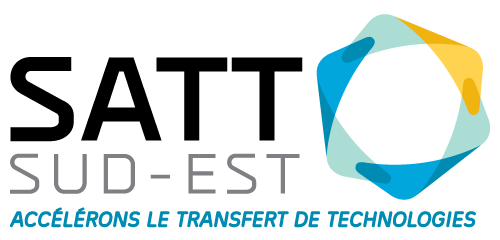
« L’axe « Procédés Industriels » est centré autour de la photonique, la fabrication des matériaux avancés et des systèmes embarqués.
Les technologies développées par les laboratoires de nos actionnaires sur ces thématiques permettent de répondre à de véritables problématiques académiques et industrielles dans des domaines variés comme l’imagerie, les lasers ou la fabrication de nano-capteurs miniaturisés. Ce dernier exemple a d’ailleurs fait l’objet d’un programme de maturation « transducteur générique » qui a permis un transfert à 2 sociétés. »
PROJETS DE MATURATION
Easy Ride : Conversion électrique pour tous les cyclistes
C’est quoi ? Un dispositif, « Easy Ride », permettant de transformer en un geste un vélo classique en vélo à assistance électrique.
Pour quelle application ? Une solution de vélo unique pour aller au travail en semaine et se dépenser le week-end.
Qui l’a inventé ? Le Laboratoire de Mécanique et d’Acoustique (LMA UMR 7031)
Qui y a participé ? Aix-Marseille Université, CNRS, Ecole Centrale Marseille.
Atténuation de sons : Une membrane contre le bruit basse fréquence
C’est quoi ? Un système d’absorption de bruit basse fréquence lié aux machines tournantes grâce à l’emploi d’une membrane à absorption non-linéaire.
Ce qu’il apporte ? La technologie est pertinente pour adresser le problème du bruit lié aux machines tournantes tels que les moteurs, compresseurs, générateurs.
Qui l’a inventé ? Le Laboratoire de Mécanique et d’Acoustique (LMA UMR 7031)
Qui y a participé ? Aix-Marseille Université, CNRS, Ecole Centrale Marseille, Institut Carnot STAR
Soft Mixer Algae : Cultiver des micro-algues fragiles grâce au mouvement céleste de la Terre
C’est quoi ? Un photobioréacteur, « Soft Mixer Algae », qui imite la rotation de la Terre pour agiter le milieu de culture.
Pour quelle application ? Produire des souches de micro-algues et de planctons intéressantes pour le développement de médicaments anti-cancéreux. Le programme de développement est mené avec la start-up marseillaise Planktovie.
Qui l’a inventé ? L’Institut de Recherche sur les Phénomènes Hors Equilibre (IRPHE, UMR 7342)
Qui y a participé ? Aix-Marseille Université, CNRS, Ecole Centrale Marseille, Université Swinburne (Australie), Incubateur Interuniversitaire Impulse
SRGOLD : Un instrument pour détecter les « atomes crochus »
C’est quoi ? Un microscope RAMAN à sensibilité et contraste améliorés.
Ce qu’il apporte ? La technologie dite à diffusion Raman stimulé baptisée « SRGOLD » permet d’obtenir des informations sur les liaisons chimiques dans des échantillons biologiques (tissus, cellules…) sans marquage ni coloration.
Qui l’a inventé ? L’équipe Mosaic de l’Institut Fresnel (IF UMR 7249)
Qui y a participé ? Aix-Marseille Université, CNRS, Institut Carnot STAR
Digue : Institut Fresnel (IF, Aix-Marseille Université, École Centrale Marseille, CNRS, UMR 7249), Institut de Recherche sur les Phénomènes Hors Équilibre (IRPHE, Aix-Marseille Université, École Centrale Marseille, CNRS, UMR 7342)
Basée sur la théorie des métamatériaux, cette nouvelle structure de protection maritime permet d’éviter le déferlement des vagues sur les digues, et ainsi augmenter la durée de vie des ouvrages. Le projet de maturation vise à valider expérimentalement, en grand bassin, le fonctionnement de cette structure.
GDC lensless endoscope : Institut Fresnel (IF,Aix-Marseille Université, École Centrale Marseille, CNRS, UMR 7249)
Nouveau système d’imagerie endo-microscopique confocal, sans lentille. Ce dispositif permet de réaliser une image volumique à l’échelle microscopique, ouvrant la porte à l’inspection de matériaux et de tissus biologiques en profondeur. Il permet l’exploration de toutes zones inaccessibles par des moyens conventionnels. Le projet de maturation vise, dans une première phase, à créer le premier dispositif d’imagerie puis, dans une seconde phase, d’effectuer les premiers tests cliniques.
Nanoparticules hybrides fluorescentes : Centre Interdisciplinaire de Nanoscience de Marseille (CINaM, Aix-Marseille Université, CNRS, UMR 7325)
L’objectif du projet de maturation est d’intégrer ces nouveaux matériaux nano-composites aux propriétés fluorescentes améliorées dans des diodes électroluminescentes organiques (OLED). Ils permettront d’envisager l’obtention de solutions fluorescentes stables et imprimables ouvrant la porte à de nombreuses applications, notamment dans les domaines des OLED et de la sécurité.
Lift double pulse : Laboratoire Lasers, Plasmas et Procédés Photoniques (LP3, Aix-Marseille Université, CNRS, UMR 7341)
Nouveau procédé qui permet de réaliser, par laser, l’impression digitale de structures de dimensions micrométriques. Cette nouvelle approche est particulièrement importante pour l’électronique sur support souple car elle supprime l’étape de recuit des matériaux conducteurs. L’objectif de la maturation est de réaliser un dispositif expérimental permettant d’optimiser et de valider le procédé. Cela devrait permettre de déterminer le potentiel et les limitations du procédé dans un contexte applicatif industriel.
Prometheus : Institut Matériaux Microélectronique Nanosciences de Provence (IM2NP, Aix-Marseille Université, Université de Toulon, CNRS, UMR 7334), Institut FRESNEL (IF, Aix-Marseille Université, École Centrale Marseille, CNRS, UMR 7249)
Nouvel assemblage de matériaux pour capteurs de lumière dont la longueur d’onde de sensibilité peut être contrôlée électriquement sur une large bande du spectre. Ce type d’imageur trouve ses applications dans les domaines de la vision nocturne pour la défense, la sécurité et l’assistance à la conduite automobile de nuit. Le but du projet est de fabriquer et de caractériser un démonstrateur de quelques pixels et connaître les performances et les limitations de ces nouveaux capteurs. Projet issu d’un appel à projets Institut Carnot STAR.
« L’accompagnement de la SATT Sud-Est, dans le cadre du projet de maturation PROMETHEUS, a permis de mettre en application les résultats de mes travaux de recherche par le développement d’un dispositif d’imagerie innovant. La SATT Sud-Est a soutenu financièrement le projet et son équipe a aussi contribué de façon importante avec des idées originales. Je souhaite que cette relation entre la recherche et le développement technologique puisse se poursuivre pendant les années à venir. »
« En ma qualité de directeur du laboratoire, j’ai particulièrement apprécié les interventions de la SATT dans mon laboratoire. Les personnels ont été favorablement sensibilisés par un discours clair, et ils ont bien compris que la SATT représentait un réel soutien à la valorisation de leurs compétences. Deux déclarations d’invention ont été déposées (12 chercheurs au LP3) suite à ces actions. En ma qualité de responsable de projet, j’ai beaucoup apprécié l’efficacité du travail de la SATT qui a effectué la demande de brevet et l’étude de marché, et m’a soutenu avec un projet de pré-maturation. Ce soutien nous permet aujourd’hui de valider notre idée. L’interaction avec l’ingénieur de la SATT est très constructive et enrichissante, et elle va bien au-delà du simple soutien financier. »
« Nous avions identifié des molécules inhibitrices de la polymérase du virus de la dengue, efficaces dans un contexte cellulaire, c’est-à-dire de potentiels antiviraux. Travailler avec la SATT nous a permis de franchir plusieurs étapes importantes dans ce programme, avec la définition d’une stratégie de propriété intellectuelle, concrétisée par le dépôt de deux brevets, et de bénéficier de compétences renforcées en chimie médicinale. Nous recherchons maintenant des partenaires industriels, avec dans ce cas aussi le soutien des experts de la SATT. »
Passer de l’invention à l’innovation est un émerveillement. Et nous avons de la chance, c’est notre métier.
Découvrez comment la SATT Sud-Est accélère le transfert de technologies en fédérant les acteurs de la recherche et de l’entreprise. Du brevet à la licence d’exploitation, en passant par la preuve de concept, la SATT Sud-Est s’impose dans les Régions Sud et Corse comme un acteur incontournable de l’innovation.



Siège
Le Silo, 35 Quai du Lazaret, CS 70545
13304 Marseille Cedex 02
Projet financé avec le concours de l'Union Européenne avec le Fonds Européen de Développement Régional.
